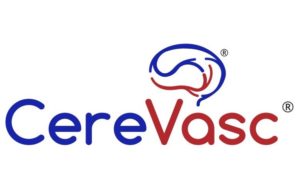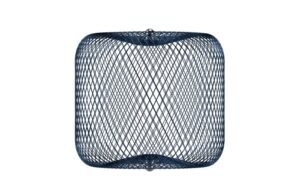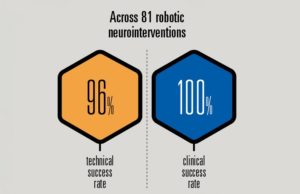Tag: JNIS
GRASSROOT trial findings support expansion of “value-priced thrombectomy devices” in resource-poor...
The GRASSROOT trial evaluating the Supernova stent retriever (Gravity Medical Technology) has found “excellent” safety and efficacy outcomes in the treatment of large vessel...
Procedural duration “exerts a greater influence” on post-thrombectomy functional outcomes compared...
A retrospective analysis of more than 6,600 acute ischaemic stroke patients has revealed that the duration of a mechanical thrombectomy procedure may have a...
Guilherme Dabus named 2025–2026 president for Society of NeuroInterventional Society
Guilherme Dabus—an interventional neuroradiologist at the Baptist Health Miami Neuroscience Institute in Miami, USA—has been named the 2025–2026 president of the Society of NeuroInterventional Surgery...
Chinese RCT demonstrates robotic system can reduce physician radiation exposure while...
Results from a prospective, multicentre randomised controlled trial (RCT) evaluating the Panvis-A neurointerventional robotic system (Shenzhen Institute of Advanced Biomedical Robot )—led by researchers...
Single-session MMA embolisation and surgical evacuation could enable more “resource-efficient” cSDH...
Performing a middle meningeal artery (MMA) embolisation procedure during the same anaesthesia session as a burr hole evacuation surgery represents a safe and potentially...
Cerevasc’s eShunt system receives US FDA Breakthrough Device designation for use...
Cerevasc announced recently that it has received its second Breakthrough Device designation from the US Food and Drug Administration (FDA) for its investigational eShunt...
Meta-analysis of nearly 500 patients synthesises current data on novel intrasaccular...
A systematic review and meta-analysis published recently in the Journal of NeuroInterventional Surgery has synthesised the existing data on intracranial aneurysm treatments utilising the...
Safety of venous sinus stenting in IIH patients established via one-year...
A prospective study has established the safety of venous sinus stenting (VSS) using a novel device in idiopathic intracranial hypertension (IIH) patients who have...
Neurointerventionists ‘can rarely recover payment’ for out-of-network thrombectomy under US No...
A new study has found that neurointerventionists have “essentially no financially viable access to payment recovery” through the US No Surprises Act (NSA) for...
Microvention announces publication of one-year results from CLEVER study
Microvention, a wholly owned subsidiary of Terumo Corporation, has announced the recent publication in the Journal of NeuroInterventional Surgery (JNIS) of one-year results from...
Microvention announces publication of SOFAST clinical data
Microvention, a wholly owned subsidiary of Terumo Corporation, has today announced the publication of data from SOFAST—a prospective, multicentre US study assessing the efficacy...
Early technique switches “should be contemplated” following failed thrombectomy attempts
A retrospective analysis including data from close to 3,000 stroke patients has concluded that early changes in mechanical thrombectomy strategies may be associated with...
Latest Pipeline Vantage device produces “acceptable outcomes” in unruptured aneurysms
A new study, published in the Journal of NeuroInterventional Surgery (JNIS) late last year, has assessed the safety of the latest iteration of the...
US neurointerventionists argue recent data “affirm” benefits of direct stroke triage
In an editor's column published recently in the Journal of NeuroInterventional Surgery (JNIS), leading members of the Society of NeuroInterventional Surgery (SNIS) have argued that the entire body...
Study finds “eye-opening” variability across physician estimations of flow-diverter deployment
A comparative study recently demonstrated the promise held by PreSize Neurovascular (Oxford Heartbeat) software in consistently and accurately making predictions about flow-diverter placement in...
EVT with poor reperfusion linked to worse outcomes than medical management...
Endovascular therapy (EVT) treatments that achieve poor reperfusion have been found to result in inferior clinical outcomes compared to best medical management (BMM) in...
Missing outcome data is common and ‘does not occur at random’...
The phenomenon of missing outcome data (MOD) within stroke registries of mechanical thrombectomy cases “is not a rare event and does not occur completely...
Systematic review and meta-analysis find stroke thrombectomy safe and effective in...
A study presented at last week’s Society of NeuroInterventional Surgery (SNIS) annual meeting (31 July–4 August 2023, San Diego, USA) noted that mechanical thrombectomy—in...
J Mocco
As president of the Society of NeuroInterventional Surgery (SNIS), endovascular neurosurgeon J Mocco (Icahn School of Medicine at Mount Sinai, New York, USA) has...
Analysis shows substantial cost saving can be achieved with Philips’ DTAS...
Royal Philips has today announced the results of a health economics analysis published in the Journal of NeuroInterventional Surgery (JNIS) that show an “innovative approach” to the...
Imperative announces data demonstrating benefits of Zoom RDL system in neurointerventional...
Imperative Care has announced the publication of early clinical data in the Journal of NeuroInterventional Surgery (JNIS) from a single-centre evaluation of the Zoom RDL radial...
Female physicians in neurointerventional surgery: Breaking down barriers
In the latter stages of 2022, the Society of NeuroInterventional Surgery (SNIS) released a position statement advocating pregnancy and parental leave policies in neurointerventional...
Prior thrombolysis improves outcomes for M2 occlusion stroke patients undergoing thrombectomy
Intravenous thrombolysis (IVT) prior to a mechanical thrombectomy procedure could result in better functional outcomes than thrombectomy alone in stroke patients with M2 occlusions,...
Meta-analysis including recent basilar trials signals benefit of EVT in posterior...
A meta-analysis of recent basilar artery occlusion trials—including ATTENTION and BAOCHE—has further indicated the potential benefits held by endovascular therapy (EVT) in treating posterior-circulation...
Squid liquid embolic agent deemed safe and effective for high-grade DAVFs
The Squid liquid embolic agent (Balt) has been deemed safe and effective in treating high-grade dural arteriovenous fistulas (DAVFs), and serves to expand the...
Atrial fibrillation does not modify treatment effect of bridging thrombolysis, study...
An international study conducted by Leonard Yeo (National University Hospital, Singapore) and colleagues has found that the presence of atrial fibrillation does not modify...
Study indicates safety of novel transmural access to carotid artery perivascular...
A transmural approach for accessing the perivascular tissues of the cervical carotid artery has been deemed safe following initial evaluations in a swine model.
Geoffrey...
SNIS: Physicians “should not have to choose” between family life and...
The Society of NeuroInterventional Surgery (SNIS) has released a position statement advocating pregnancy and parental leave policies in neurointerventional surgery, also voicing support for...
SWIFT-DIRECT sub-analysis finds effect of bridging thrombolysis is preserved over time
A recent sub-analysis of the SWIFT-DIRECT trial, which is published in the Journal of NeuroInterventional Surgery (JNIS), has found “no evidence” that the effect...
Abnormal DW-MRI foci “significantly more frequent” with radial versus femoral access
A prospective analysis of 200 consecutive diagnostic cerebral angiograms has indicated that the number of diffusion-weighted magnetic resonance imaging (DW-MRI) restriction foci was “significantly...
J Mocco becomes 27th Society of NeuroInterventional Surgery president
J Mocco, an endovascular neurosurgeon at Mount Sinai in New York City, USA has been named the 2022 president of the Society of NeuroInterventional...
SNIS 2022: Direct triage to Level 1 stroke centres reduces time...
Implementing severity-based field triage leads to faster treatment and less disability for stroke patients, according to late-breaking research presented recently at the Society of...
Route 92’s Monopoint operating platform shows 82% first-pass effect in independent...
Route 92 Medical recently announced the publication of an investigator-initiated, multicentre SLIC (Super large-bore ingestion of clot) study of its proprietary Monopoint operating platform,...
Route 92 publishes data demonstrating 80% first-pass effect with novel thrombectomy...
Route 92 Medical has announced the publication of initial results from the SUMMIT NZ clinical trial—a single-arm, multicentre, prospective trial evaluating its proprietary Monopoint...
Michael Chen
Michael Chen—a neurointerventionist and professor of Neurology, Neurosurgery and Radiology at Rush University Medical Center in Chicago, USA—speaks to NeuroNews to provide insight on...
Guidewire-less neurovascular navigation system shows promise in rabbit aneurysm model
A new concept for navigating the neurovasculature, performed without the aid of a guidewire, has demonstrated its ability to be manoeuvred through tortuous vessels,...
Lack of evidence among challenges that must be overcome to realise...
In spite of the clinical successes observed to date, a lack of high-level safety and efficacy evidence, among other current challenges and limitations, must...
CereVasc announces publication of first-in-human case report with eShunt system
CereVasc has announced the publication of a case report detailing the first treatment in a study of its eShunt system—an investigational device intended to...
Large prospective study demonstrates high efficacy and low mortality rates with...
The Diversion-p64 study—the largest prospective study using the p64 flow modulation device (phenox) to date—has demonstrated that the device has a high level of...






































